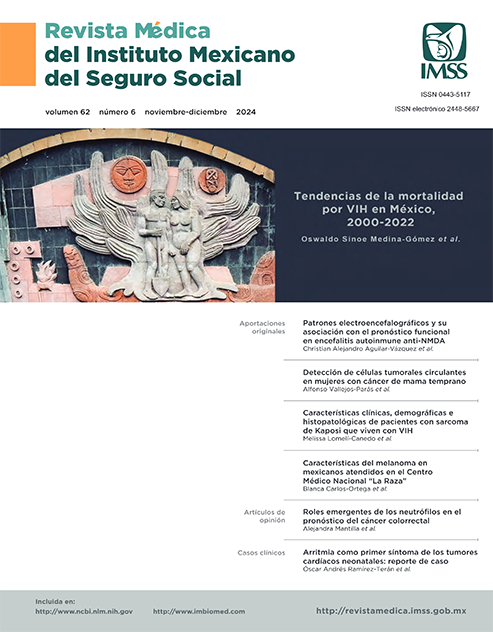Avian influenza: a latent challenge
Main Article Content
Keywords
Abstract
The avian influenza virus was first identified in China in 1996, but it was in 2021 when numerous outbreaks of avian influenza began in different regions of the world, including
Mexico. This virus has caused a significant impact on animal health and well-being, since it mainly affects wild birds, poultry and other animals, including humans, putting the food security and subsistence of those who depend on it at risk.
References
European Centre for Disease Prevention and Control. Investigation protocol for human exposures and cases of avian influenza in the EU/EEA. Stockholm: ECDC; 2023.
López-Martinez I, Balish A, Barrera-Badillo G, Jones J, Nuñez-García TE,et al. Highly pathogenic avian influenza A(H7N3) virus in poultry workers, Mexico, 2012. Emerg Infect Dis. 2013;19(9):1531-4. doi: 10.3201/eid1909.130087.
Belser JA, Davis CT, Balish A, Edwards LE, Zeng H, Maines TR,et al. Pathogenesis, Transmissibility, and Ocular Tropism of a Highly Pathogenic Avian Influenza A (H7N3) Virus Associated with Human Conjunctivitis. J Virol 2013;87:https://doi.org/10.1128/jvi.00154-13.
Nguyen-Van-Tam JS, Nair P, Acheson P, Baker A, Barker M,et al. Outbreak of low pathogenicity H7N3 avian influenza in UK, including associated case of human conjunctivitis. Euro Surveill.2006;11(18):pii=2952. https://doi.org/10.2807/esw.11.18.02952-en
Uyeki TM, Milton S, Reinosso WC, Shetty V, et al. Highly Pathogenic Avian Influenza A(H5N1) Virus Infection in a Dairy Farm Worker. N Engl J Med 2024;390:2028-2029. DOI: 10.1056/NEJMc2405371.
European Centre for Disease Prevention and Control (ECDC). Avian influenza overview September - December, 2021. Stockholm: ECDC; 2021. Available at:https://www.ecdc.europa.eu/en/publications-data/avian-influenzaoverview-september-december-2021.
European Centre for Disease Prevention and Control (ECDC). Factsheet on A(H5N1). Stockholm: ECDC; 2022. Available at:https://www.ecdc.europa.eu/en/zoonotic-influenza/facts/factsheet-h5n1.
European Centre for Disease Prevention and Control (ECDC). Factsheet on A(H7N9). Stockholm: ECDC; 2023. Available at:https://www.ecdc.europa.eu/en/zoonotic-influenza/facts/faq-H7N9.
European Food Safety Authority, European Centre for Disease Prevention and Control, European Union Reference Laboratory for Avian Influenza, Alexakis L, Fusaro A,et al, 2024. Scientific report: Avian influenza overview March-June 2024. EFSA Journal 2024;22(7):8930, 72 pp. Available at:https://doi.org/10.2903/j.efsa.2024.8930.
Changing epidemiological patterns in human avian influenza virus infections. The Lancet Microbe.https://doi.org/10.1016/S2666-5247(24)00158-7.
Department of Health. Human case of avian influenza (birdflu) detected in returned traveller to Victoria. Victoria Australia;2024. Disponible en: https://www.health.vic.gov.au/healthadvisories/human-case-of-avian-influenza-bird-flu-detectedin-returned-traveller-to-victoria.
Centers for Disease Control and Prevention. How CDC is monitoringinfluenza data among people to better understand thecurrent avian influenza A (H5N1) situation. Atlanta: CDC; 2024.Disponible en: https://www.cdc.gov/bird-flu/h5-monitoring/index.html
Secretaría de Salud. Secretaría de Salud informa que no existe riesgo para la población ante detección de primer caso humano de influenza aviar A (H5N2). Comunicado de prensa. 5 de junio de 2024. Disponibleen:https://www.gob.mx/agricultura/prensa/secretaria-de-salud-informa-que-no-existe-riesgo-para-la-poblacion-ante-deteccion-de-primer-caso-humano-de-influenza-aviar-a-h5n2-367259?idiom=es


